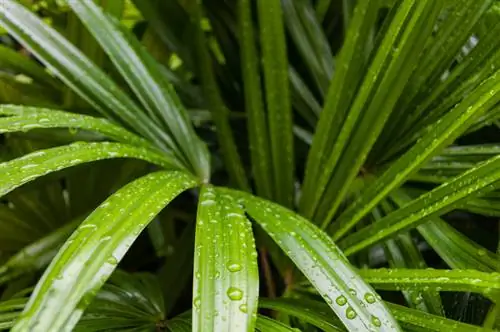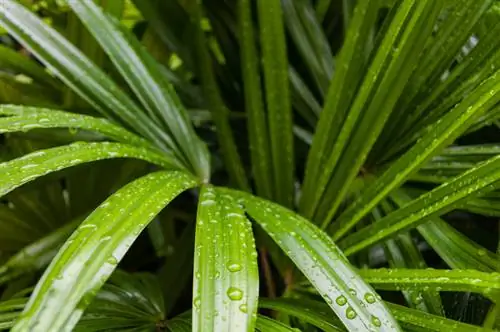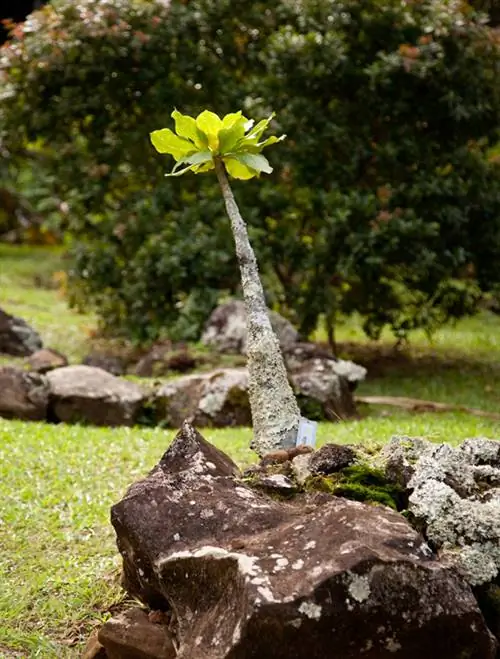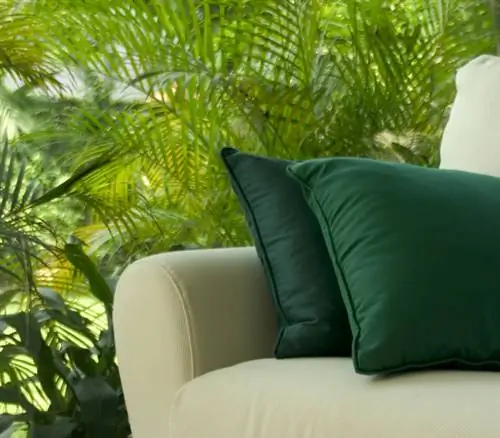- Author admin [email protected].
- Public 2023-12-16 16:46.
- Last modified 2025-01-23 11:21.
The stick palm or rod palm (rhapis) is often cultivated as a houseplant in this country because, as a fan palm, it brings even more exoticism into your own four walls than a dragon tree. Especially when small children and pets are regularly present, the legitimate question arises as to whether the palm tree is actually poisonous in any way.

Is the palm tree poisonous?
The stick palm (Rhapis) is not poisonous as a houseplant and is therefore harmless to small children and pets. However, purchased specimens may contain pesticides, fertilizers or mold, so caution should be exercised when consumed or in contact.
A completely uncomplicated and harmless houseplant
The relatively easy-care palm tree is not only particularly decorative, it is also completely harmless to small children or pets. After all, on the one hand, this palm is not poisonous, on the other hand, apart from the somewhat pointed leaves, there are no spines or anything similar to be found in the cultivation of agaves.
Despite non-toxicity, caution is advised
Although the leaves of the palm tree do not contain any toxins, free-flying birds in the apartment should not be able to nibble on the leaves of the palm tree or scratch in the pot substrate for the following reasons. Finally, commercially purchased specimens may contain the following substances:
- Pesticides on the leaves
- strongly dosed fertilizer in the pot and on the plant parts
- Mold in the potting soil
Tip
The floral palm is not only non-toxic, but like the spider plant, it is also said to be able to help purify the air and thus create a he althy indoor climate by binding and converting toxins such as ammonia from the indoor air.






